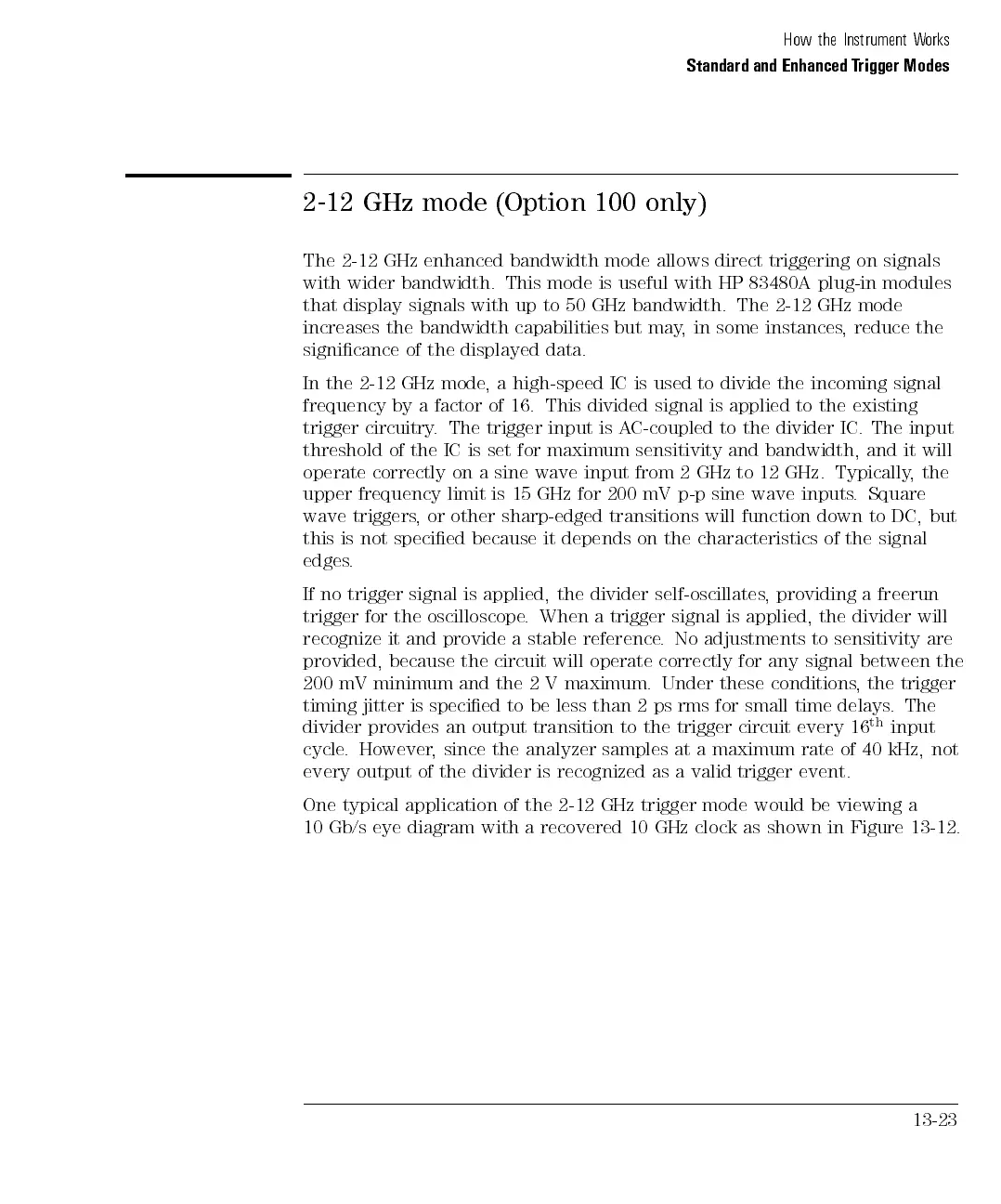How the Instrument Works
Standard and Enhanced Trigger Modes
2-12 GHz mode (Option 100 only)
The 2-12 GHz enhanced bandwidth mode allows direct triggering on signals
with wider bandwidth. This mode is useful with HP 83480A plug-in modules
that display signals with up to 50 GHz bandwidth. The 2-12 GHz mode
increases the bandwidth capabilities but may, in some instances, reduce the
signicance of the displayed data.
In the 2-12 GHz mode, a high-speed IC is used to divide the incoming signal
frequency by a factor of 16. This divided signal is applied to the existing
trigger circuitry
. The
trigger
input
is
A
C-coupled
to
the
divider
IC.
The
input
threshold of
the IC
is set
for
maximum
sensitivity
and
bandwidth,
and
it
will
operate correctly
on a
sine wave
input
from
2
GHz
to
12
GHz
.
Typically
,
the
upper
frequency
limit
is
15
GHz
for
200
mV p-p
sine wave
inputs
.
Square
wave
triggers
,
or
other
sharp-edged
transitions
will
function down
to DC,
but
this
is
not
specied
because
it
depends
on
the
characteristics
of the
signal
edges
.
If
no
trigger
signal
is
applied,
the
divider
self-oscillates
,
providing a
freerun
trigger
for
the
oscilloscope
.
When
a
trigger
signal
is
applied,
the
divider
will
recognize
it
and
provide
a
stable
reference
.
No
adjustments
to
sensitivity
are
provided,
because
the
circuit
will
operate
correctly
for
any
signal
between
the
200
mV
minimum
and
the
2
V
maximum.
Under
these
conditions
,
the
trigger
timing
jitter
is
specied
to
be
less
than
2
ps
rms
for
small
time
delays
.
The
divider
provides an
output transition
to the
trigger
circuit
every
16
th
input
cycle
. However
, since
the analyzer
samples
at
a
maximum
rate
of
40
kHz
,
not
every output of the divider is recognized as a valid trigger event.
One typical application of the 2-12 GHz trigger mode would be viewing a
10 Gb/s eye diagram with a recovered 10 GHz clock as shown in Figure 13-12.
13-23

